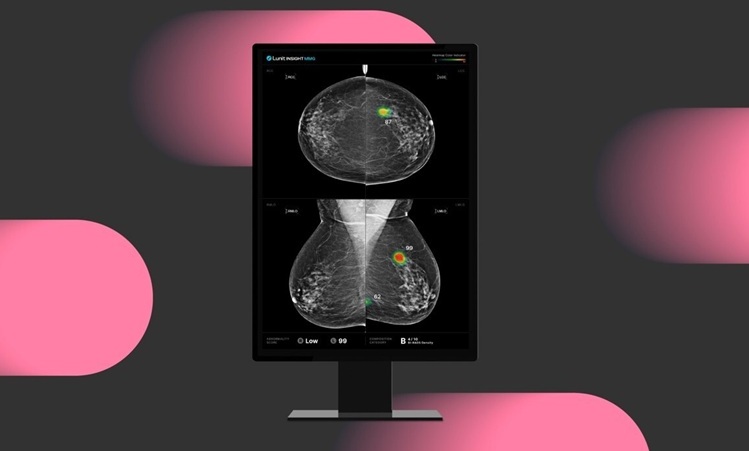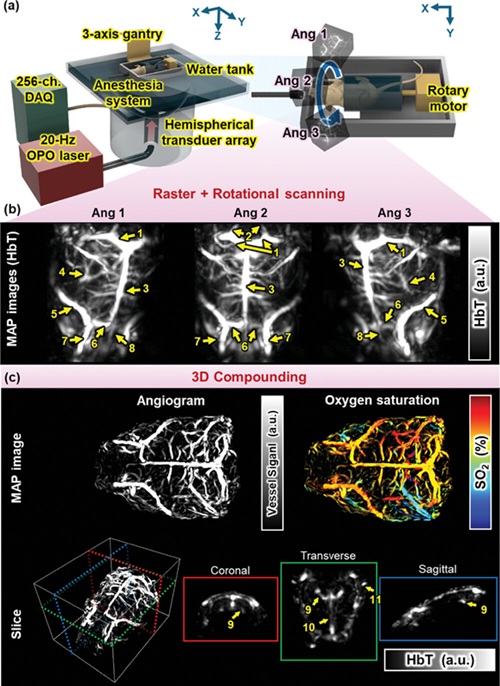Ultra-Powerful MRI Scans Enable Life-Changing Surgery in Treatment-Resistant Epileptic Patients
|
By MedImaging International staff writers Posted on 24 Mar 2025 |

Approximately 360,000 individuals in the UK suffer from focal epilepsy, a condition in which seizures spread from one part of the brain. Around a third of these patients experience persistent seizures despite taking medication, and surgery remains the only treatment capable of curing their condition. Epileptic seizures are the sixth leading cause of hospital admissions. For surgeons to perform the necessary operation, they must accurately identify the brain lesions (damaged tissue) responsible for triggering seizures. By visualizing these lesions on MRI scans, surgeons can significantly increase the chances of the patient being seizure-free after surgery. Ultra-high-field 7T MRI scanners provide much higher resolution scans than the NHS’s standard 3T MRI scanners, enabling better detection of these lesions in patients with drug-resistant epilepsy. However, most NHS hospitals use even lower field strength, such as 1.5T scanners. Despite the advantages of 7T MRI, these scans are prone to signal dropouts, particularly in the temporal lobes, which is the area most commonly affected by epilepsy. Now, a new study published in Epilepsia has presented a technique to address this issue.
The research team from the University of Cambridge’s Wolfson Brain Imaging Centre (Cambridge, UK), in collaboration with colleagues from Université Paris-Saclay (Paris, France), applied a technique called ‘parallel transmit,’ which uses eight transmitters instead of the usual single transmitter to avoid the signal dropouts. The team tested this method with 31 drug-resistant epilepsy patients to assess whether the parallel transmit 7T scanner could outperform conventional 3T scanners in detecting brain lesions. Their findings revealed that the parallel transmit 7T scanner uncovered previously undetected structural lesions in nine patients. It also confirmed suspected lesions identified with the 3T scanner in four patients, and showed that suspected lesions in another four patients were not present. In more than half of the cases (57%), the parallel transmit 7T scans provided clearer images than the standard single-transmit 7T scans, while the remaining cases produced equally clear images.
Single-transmit scanners never surpassed the performance of parallel transmit scanners. Based on these results, the management of epilepsy was altered for more than half of the patients (18 patients, or 58%). Nine patients were offered surgery to remove the lesions, and one was recommended for laser interstitial thermal therapy, a procedure that uses heat to eliminate the lesion. For three patients, the scans revealed more complex lesions, which meant surgery was no longer an option. Five patients with larger or differently located lesions were offered stereotactic electroencephalography (sEEG), a procedure involving electrodes inserted into the brain to pinpoint the lesions. While sEEG is typically not used due to its cost and invasiveness, the detailed 7T scans made it feasible for the patients most likely to benefit from it. When patients were asked about their experience with the procedure, they reported only minor and occasional discomfort, such as dizziness when entering the scanner and increased claustrophobia due to the head coil. This suggests that parallel transmit 7T MRI is generally well tolerated by patients.
“Having epilepsy that doesn’t respond to anti-seizure medications can have a huge impact on patients’ lives, often affecting their independence and their ability to maintain a job. We know we can cure many of these patients, but that requires us to be able to pinpoint exactly where in the brain is the root of their seizures,” said Dr. Thomas Cope from the University’s Department of Clinical Neurosciences, and a Consultant Neurologist at CUH. “7T scanners have shown promise over the past few years since their introduction, and now, thanks to this new technique, more epilepsy patients will be eligible for life-changing surgery.”
Related Links:
Wolfson Brain Imaging Centre
Université Paris-Saclay
Latest MRI News
- AI-Powered MRI Technology Improves Parkinson’s Diagnoses
- Biparametric MRI Combined with AI Enhances Detection of Clinically Significant Prostate Cancer
- First-Of-Its-Kind AI-Driven Brain Imaging Platform to Better Guide Stroke Treatment Options
- New Model Improves Comparison of MRIs Taken at Different Institutions
- Groundbreaking New Scanner Sees 'Previously Undetectable' Cancer Spread
- First-Of-Its-Kind Tool Analyzes MRI Scans to Measure Brain Aging
- AI-Enhanced MRI Images Make Cancerous Breast Tissue Glow
- AI Model Automatically Segments MRI Images
- New Research Supports Routine Brain MRI Screening in Asymptomatic Late-Stage Breast Cancer Patients
- Revolutionary Portable Device Performs Rapid MRI-Based Stroke Imaging at Patient's Bedside
- AI Predicts After-Effects of Brain Tumor Surgery from MRI Scans
- MRI-First Strategy for Prostate Cancer Detection Proven Safe
- First-Of-Its-Kind 10' x 48' Mobile MRI Scanner Transforms User and Patient Experience
- New Model Makes MRI More Accurate and Reliable
- New Scan Method Shows Effects of Treatment on Lung Function in Real Time
- Simple Scan Could Identify Patients at Risk for Serious Heart Problems
Channels
Radiography
view channel
Higher Chest X-Ray Usage Catches Lung Cancer Earlier and Improves Survival
Lung cancer continues to be the leading cause of cancer-related deaths worldwide. While advanced technologies like CT scanners play a crucial role in detecting lung cancer, more accessible and affordable... Read more
AI-Powered Mammograms Predict Cardiovascular Risk
The U.S. Centers for Disease Control and Prevention recommends that women in middle age and older undergo a mammogram, which is an X-ray of the breast, every one or two years to screen for breast cancer.... Read moreUltrasound
view channel
Tiny Magnetic Robot Takes 3D Scans from Deep Within Body
Colorectal cancer ranks as one of the leading causes of cancer-related mortality worldwide. However, when detected early, it is highly treatable. Now, a new minimally invasive technique could significantly... Read more
High Resolution Ultrasound Speeds Up Prostate Cancer Diagnosis
Each year, approximately one million prostate cancer biopsies are conducted across Europe, with similar numbers in the USA and around 100,000 in Canada. Most of these biopsies are performed using MRI images... Read more
World's First Wireless, Handheld, Whole-Body Ultrasound with Single PZT Transducer Makes Imaging More Accessible
Ultrasound devices play a vital role in the medical field, routinely used to examine the body's internal tissues and structures. While advancements have steadily improved ultrasound image quality and processing... Read moreNuclear Medicine
view channel
Novel PET Imaging Approach Offers Never-Before-Seen View of Neuroinflammation
COX-2, an enzyme that plays a key role in brain inflammation, can be significantly upregulated by inflammatory stimuli and neuroexcitation. Researchers suggest that COX-2 density in the brain could serve... Read more
Novel Radiotracer Identifies Biomarker for Triple-Negative Breast Cancer
Triple-negative breast cancer (TNBC), which represents 15-20% of all breast cancer cases, is one of the most aggressive subtypes, with a five-year survival rate of about 40%. Due to its significant heterogeneity... Read moreGeneral/Advanced Imaging
view channel
AI Model Significantly Enhances Low-Dose CT Capabilities
Lung cancer remains one of the most challenging diseases, making early diagnosis vital for effective treatment. Fortunately, advancements in artificial intelligence (AI) are revolutionizing lung cancer... Read more
Ultra-Low Dose CT Aids Pneumonia Diagnosis in Immunocompromised Patients
Lung infections can be life-threatening for patients with weakened immune systems, making timely diagnosis crucial. While CT scans are considered the gold standard for detecting pneumonia, repeated scans... Read moreImaging IT
view channel
New Google Cloud Medical Imaging Suite Makes Imaging Healthcare Data More Accessible
Medical imaging is a critical tool used to diagnose patients, and there are billions of medical images scanned globally each year. Imaging data accounts for about 90% of all healthcare data1 and, until... Read more
Global AI in Medical Diagnostics Market to Be Driven by Demand for Image Recognition in Radiology
The global artificial intelligence (AI) in medical diagnostics market is expanding with early disease detection being one of its key applications and image recognition becoming a compelling consumer proposition... Read moreIndustry News
view channel
GE HealthCare and NVIDIA Collaboration to Reimagine Diagnostic Imaging
GE HealthCare (Chicago, IL, USA) has entered into a collaboration with NVIDIA (Santa Clara, CA, USA), expanding the existing relationship between the two companies to focus on pioneering innovation in... Read more
Patient-Specific 3D-Printed Phantoms Transform CT Imaging
New research has highlighted how anatomically precise, patient-specific 3D-printed phantoms are proving to be scalable, cost-effective, and efficient tools in the development of new CT scan algorithms... Read more
Siemens and Sectra Collaborate on Enhancing Radiology Workflows
Siemens Healthineers (Forchheim, Germany) and Sectra (Linköping, Sweden) have entered into a collaboration aimed at enhancing radiologists' diagnostic capabilities and, in turn, improving patient care... Read more



















